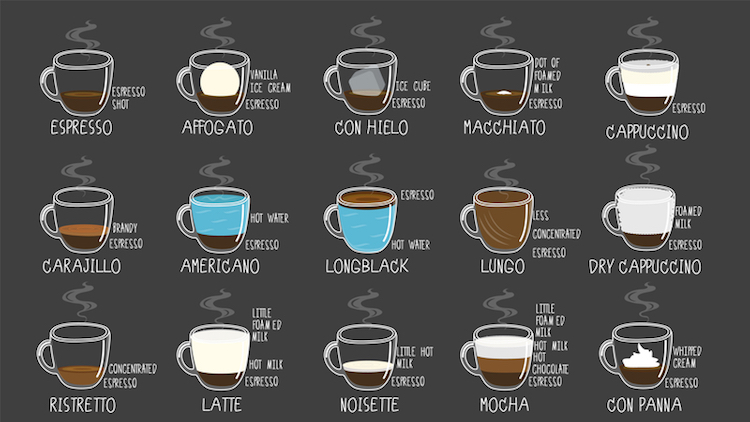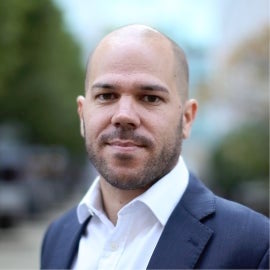
Is procuring BIM like ordering a coffee? Do you want 4D or flat white? ISO 19650 or iced? Digital twin or caramel drizzle? Golden thread or grande? Floriano Ferreira, director of building data management at engineering consultancy HDR, discusses the need to educate the client, so they can make an informed and effective choice.
Gone are the days when you can walk into a cafe and simply ask for a coffee. You’re faced with myriad options – espressos, ristrettos, flat whites, lattes, in five different sizes, with all the dairy and non-dairy milk options, syrups and drizzles, from lava-hot to ice cold until you end up with an order akin to a short story.
Too much choice can have a paralysing effect, and to experience this ordering coffee is one thing, but if it is affecting your business, it’s a whole different story. What has this got to do with BIM? Well, when a typical client asks for BIM, what is it they’re asking for exactly? Is it 3D? or 4D, 5D, 6D? What about OIRs, AIRs, EIRs, MPDTs, BEPs, IoTs and digital twins? Are they asking for ISO 19650 compliance or the golden thread? Confused yet?
When faced with overwhelming complexity and jargon, we often have to put our trust in the experts to make the right decisions for us, hoping that we won’t be given a generic one-size-fits-all answer to our problem. At HDR, we help clients understand what it is they are asking for when they say, “We want BIM”, and also how our approach helps to build trusting relationships and solid foundations for a digital strategy.
Ask questions
We start by asking questions, a lot of questions. We are the curious kid in the room constantly asking why, why, why, delving deeper with each question, talking to as many people as possible in the organisation. We do this because we want to demystify BIM and help our clients understand what it is they mean by BIM – not by definition, but by requirement – to help build a BIM strategy with strong foundations.
A typical, albeit simplified, conversation might go like this:
HDR: “Why do you want BIM?”
Client: “I’ve heard it’s a good thing to have”
HDR: “Why is that?”
Client: “Because it will make my design better.”
HDR: “Why do you want a better design?”
Client: “So I have a more efficient building.”
HDR: “Why do you want that?”
Client: “So it produces less carbon and waste products.”
HDR: “Why is that important to you?”
Client: “Because one of our core objectives is to be carbon net zero by 2030.”

“We start by asking questions, a lot of questions. We do this because we want to help our clients understand what it is they mean by BIM.”
Thus we get from “We want BIM” to the core objectives of why they want BIM in a few steps.
This is how we get to understand the challenge, the pain points and what our client is trying to do. But does that one individual understand the needs for the whole organisation? What about the rest of the organisation? The other departments? External stakeholders? Without their input, we will simply address a set of issues for a single person or function and will achieve very little buy-in from everyone else. And without this collective buy-in, digital transformations fail.
By talking to as many stakeholders as possible, we try to answer these points:
- The current situation – in terms of processes, resources, capabilities and technology;
- The aspiration;
- The drivers – which may be high level, like organisational values and objectives;
- The goal – which may differ from the aspiration after getting all sides of the story.
Supporting the client
Each stakeholder paints a different picture, allowing us to get a clear idea on what the challenge is, who is affected by what and where the opportunities lie. This isn’t a one-off exercise either: we speak to a wide variety of stakeholders at different levels of seniority to understand the challenge by asking lots and lots of questions.
We then repeat this exercise at regular intervals, checking in and monitoring any changes in needs. This is a key step because the world around us is always changing and so is that of our clients. Today, you might have a latte; tomorrow, you may take an espresso. Today, you want a data storage solution; tomorrow, you need a digital twin.
This engagement with the client forms the journey, along which we will educate them – and we also often find that our client educates us. It is along this journey we aim to flesh out the real BIM drivers and where we can start building trust with our client.
Building trust
We sometimes hear feedback from clients that they have asked for BIM before but didn’t get what they wanted. Instead, they got a gimmicky tool, a software platform and a generic report filled with complex processes and indistinct targets. This is, of course, oversimplified: there are some great examples in our industry of where this is not the case.
But what happens when clients don’t get what they want? Very simply, it erodes trust. When an initiative is started, changed, dropped and restarted, it loses buy in, it loses traction and will eventually fail. So how do we change this? How do we move our clients into a position of trust? We have found that these five steps have led to successful, trusting relationships with clients:
- Bringing clients along the journey is the first step in gaining trust, being open and transparent throughout the process.
- Getting the basics right before getting into the more advanced stuff – you say you want a digital twin, let’s talk about having a standardised naming convention? Where do you store your information?
- Communicating clearly by having consistent messaging around the why and using this with all stakeholders so it’s not ‘just another side project from leadership’.
- Show incremental improvements – small tangible solutions in bite-sized chunks. These incremental changes are more palatable, and will increase buy-in and traction, building trust bit by bit.
- Know your limits of expertise by knowing when to say “I don’t know” instead of blagging your way through, using the opportunity to bring in the right expertise, either from within your business or outsourced to a partner.
Say-do-say principle
One tool we have used consistently in HDR that helps to build trust is our 5D approach to all the challenges presented to us (and no – this has nothing to do with adding cost data to a model):
Define: First, we focus on understanding what the need is. This is crucial, as often our clients don’t know this fully themselves. What are our client’s goals and objectives? We define the scope and identify the key stakeholders.
Discover: Then we carry out a thorough discovery phase. We engage with stakeholders from different parts of the business and at different levels of seniority to try to paint a full picture of what the current situation is, where the pain points are and who might be impacted by a potential change to the status quo.
This phase also helps to either validate the client’s original goals or inform changes to them.
Design: In the design phase we set out the plan. We consider the processes and protocols, define roles and responsibilities and any technology requirements as may be applicable.
Deliver: We then deliver against our plan, supporting people through training and bringing them along the journey.
Drive: Finally, we drive success of what we have delivered by checking in, reviewing what we’ve done against the original client goals and gathering feedback from key stakeholders to ensure any changes are accepted and well embedded.
Once we have the why outlined from the Define and Discovery phases, the rest essentially boils down to:
- say what you’re going to do (design);
- do it (delivery); and
- Say what you’ve done (drive).
And this isn’t just once. This is over and over again, with regular check-ins, building that trust and bringing the client on the journey.
In essence, for us it is about building a relationship with our clients and guiding them through each step of this journey, explaining the pros and cons of each option, sharing our experience and generally providing as much information as possible to enable our clients to make more informed decisions.
Be clear on the journey, build a trusting relationship and keep repeating back why you’re on this journey, what you have done, what you are doing and what you are doing next. So the next time someone requests ‘BIM’, it won’t be a panic order – even if the coffee order still is.
HDR | Hurley Palmer Flatt Group became HDR last month (January).
Don’t miss out on BIM and digital construction news: sign up to receive the BIMplus newsletter.













